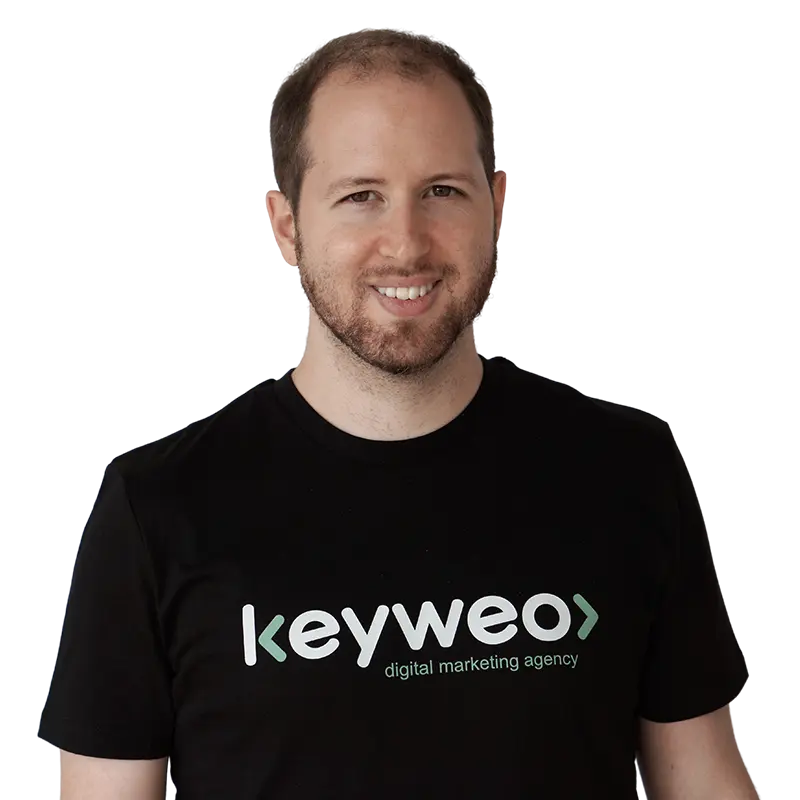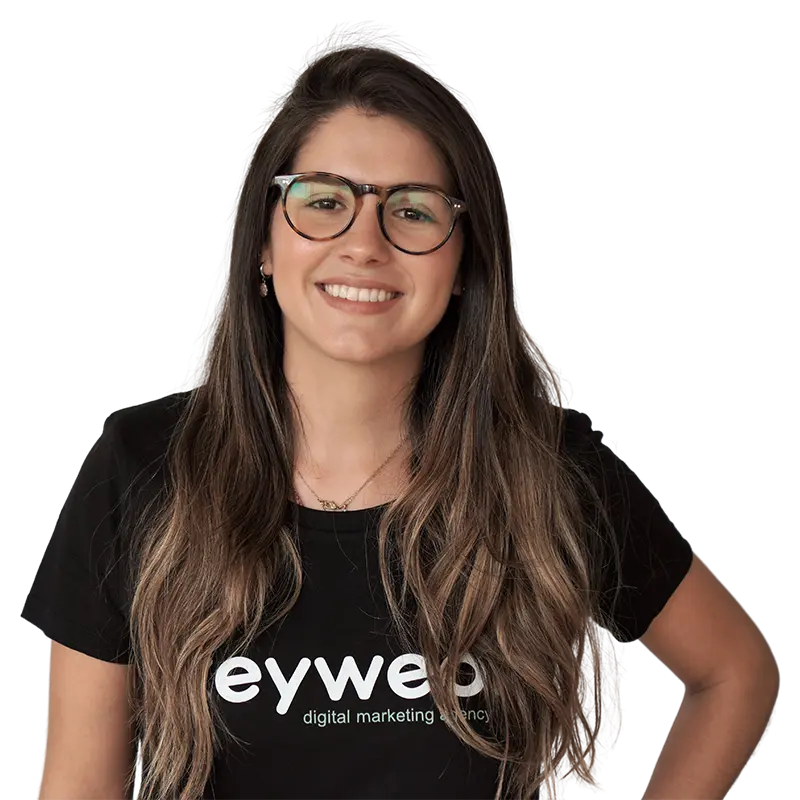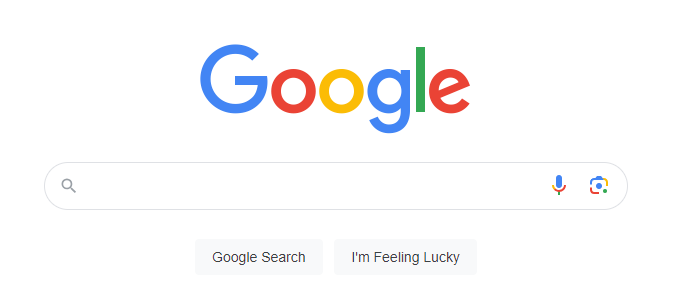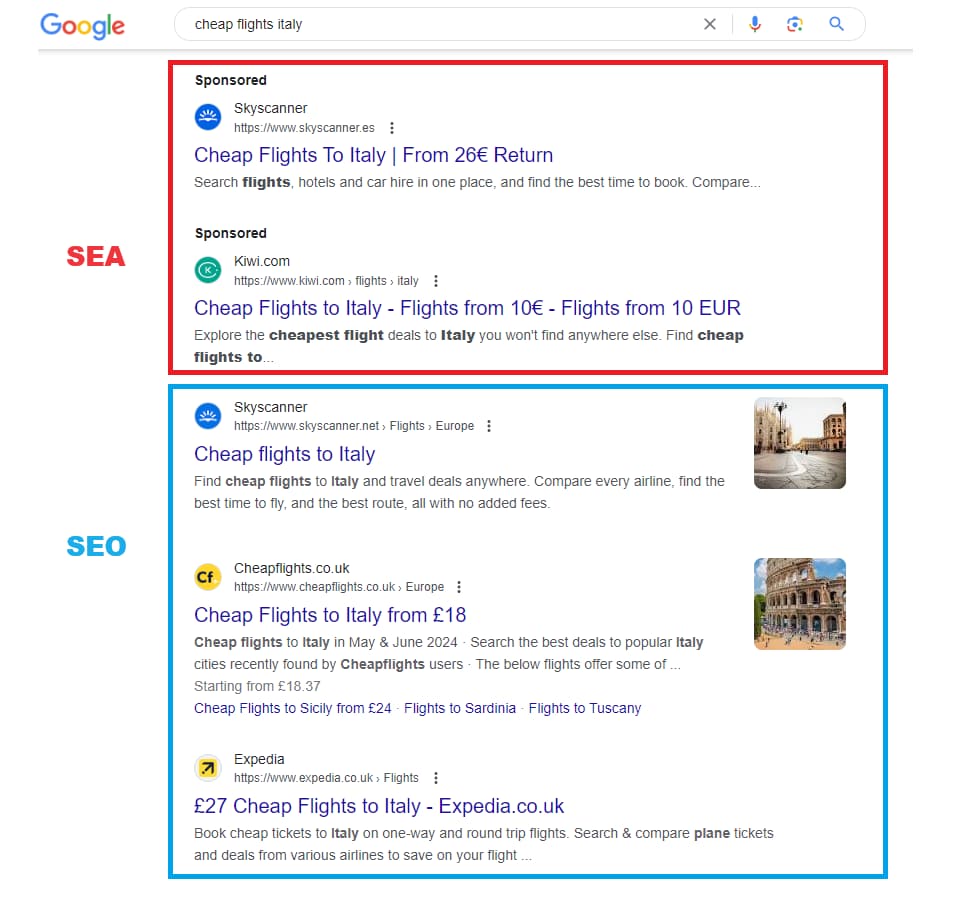SMO, SEO, SEA, and SEM are common terms in the web marketing industry. Chances are you’ve read or heard them before, but may not know exactly what they refer to. Keyweo is here to explain!
SEO: Search Engine Optimization
The abbreviation SEO comes from the English expression “Search Engine Optimization”, which can be translated as “optimization for search engines”. In other words: It is the “natural” search engine optimization of a website.
Natural search engine optimization means that search engines consider a search query relevant without charging money for it.
SEO involves a set of techniques used by digital marketing experts to enhance a website’s ranking in search engines, primarily Google. These techniques can be categorized into three main areas:
- Technology
- Contents
- Popularity
Technology refers to all aspects of a website’s performance, such as the quality of the code or the optimization of the loading speed.
Content, on the other hand, refers to the text, images or videos embedded in a website. To be suitable for SEO, the content must be relevant, unique, original and “fesh”, which means to be regularly updated.
Finally, popularity refers to websites that link to your website.
This is also known as netlinking. Search engines use this to assess the relevance of your website. The more inbound links you receive from related websites, the higher your position will be in Google search results.
SEA: Search Engine Advertising
SEA, or Search Engine Advertising, refers to paid advertisements in search engines. These ads are commonly known as “sponsored links” or “commercial links.”
With SEA, you have the opportunity to appear on the first page of search engine results in a specific area for a fee.
The cost of this marketing technique usually depends on the number of clicks and is referred to as CPC (Cost per Click). An SEA expert starts by selecting keywords, then writes the ad content and organizes them into different campaigns. They then set the maximum bid they’re willing to pay for a click and their daily budget.
When an internet user searches for a keyword selected by the SEA specialist, the search engine operators (Google Ads, Bing Ads, etc.) will compete with the advertisers and display either the higest bidder or the ads with the highest click-through rate (CTR).
SMO: Social Media Optimization
The term SMO stands for Social Media Optimization, it includes all measures carried out on social networks to increase the visibility and engagement of users. User engagement can be expressed through shares, likes or comments.
To achieve this, you need an account on a social platform (like Facebook, Instagram, YouTube, Twitter, TikTok etc…) and a strategy with content and actions to drive engagement.
Less common, but just as important, is the term SMA (Social Media Advertising) for sponsored content on social networks. This includes all advertisements on social platforms, with Instagram and Facebook Ads being the most prominent.
SEM: Search Engine Marketing
Search engine marketing, commonly referred to as SEM, stands for “marketing for search engines”. It includes all digital marketing techniques aimed at improving the ranking and visibility of one’s website or business. SEM can be both natural and paid, with SEO and SEA being summarized by the term SEM.














